
     
| |
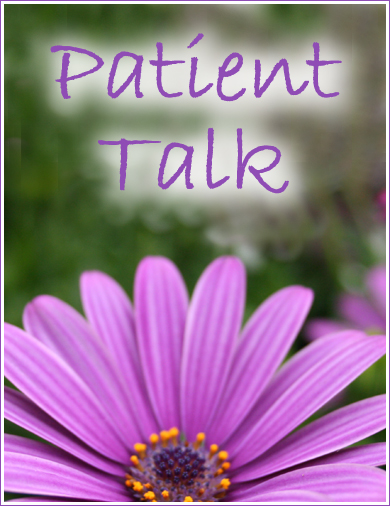
|
 |

|
When a family learns about a new treatment for epilepsy, the first questions are always the same: What exactly is this? Does it work? And if we pursued it, what would it be like to be a patient?
"Patient Talk" is here to answer those questions. It's a growing resource for patients and families, providing first-person accounts from patients with epilepsy who have been treated with the Andrews-Reiter approach.
You'll hear how many of them, at the start, were concerned about the A-R techniques before recognizing notable improvements in their health. Through their experiences, you'll
get a clearer sense of what the A-R approach is and whether it's something you'd like to explore further. |
|
 |
 |
|
|
 |
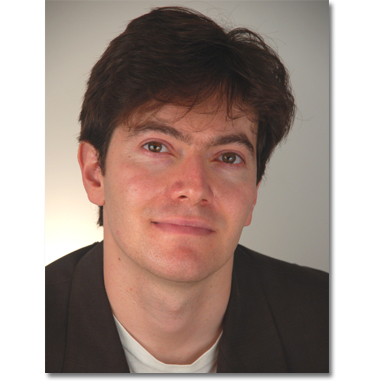
|
Joshua Kors
Joshua Kors is an award-winning investigative reporter who writes about health issues. He will be speaking at the Toronto conference.
Even today I have a hard time talking about my epilepsy.
Though it's been 11 years since my first seizure, five years since I last saw the inside of an ambulance, I still feel my stomach constrict when the topic comes up. There are reasons, I suppose. In a sheltered life lived in the suburbs, epilepsy was the only thing to make me deeply afraid. I felt like a captive in my own skin, prisoner to neurons that could fire without warning. My sophomore year of high school I wound up on the floor of my biology class, unconscious and shaking, my eyes rolled to the back of my head. I was rushed to the hospital, then released days later.
After that the seizures came in waves. Each began as a small neural misfire: a red light that would burst into the upper-right-hand corner of my vision. Most times the light would fade. Other times it spread, as if my field of vision had caught on fire. When the light lasted, disorientation would follow. Then my right eye would black out before I'd lose consciousness altogether. For the next nine years these lights came and went, sometimes as many as five a day, other times as little as one or two. There were good days and bad days. Mostly there were bad days. 
|
| |

|
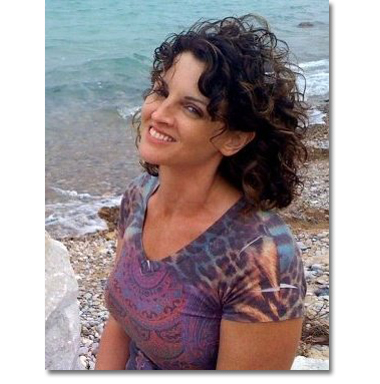 |
Shanna Ertell
I am 42 years old, and thanks to Dr. Donna Andrews and Dr. Joel Reiter, I have been seizure-free for over six years.
I entered the Andrews-Reiter program in August 2000. I was suffering from partial complex seizures, which were occurring at least once a week. My epilepsy had been diagnosed when I was 25, two years after I began having seizures. On many occassions I would experience memory loss in the early morning hours. Soon those spells increased to once a week.
My experience with neurologists—there were at least four of them—was very frustrating. Reading their written evaluations, it was clear they weren't listening to me. My feelings were minimized or ignored. And according them, the only possible way to control my seizures was to switch from one drug to another.
In 1999 the neurologist treating me began to aggressively push me towards surgery, which would remove a portion of my brain. This option made little sense to me. I had a successful career as a tax accountant and was fully able to function in my daily life. The only thing I was unable to do at the time was drive a vehicle. When I mentioned my concerns to the doctor, his response was “What if you were walking across a railroad track or holding a sharp knife when a seizure occurs?” I didn’t often find myself walking across railroad tracks, and I didn’t have generalized seizures that would cause me harm if I were holding a knife.
My neurologist's views baffled me. I knew there had to be a better solution.
I began to research alternatives to the treatments I was getting from my neurologists. That’s when I found Dr. Joel Reiter's book, Epilepsy: A New Approach. That book was very enlightening, and it led me to the Andrews-Reiter clinic.
In August 2000 I began an intensive treatment program with Andrews and Reiter. The initial testing began with Dr. Andrews doing an extensive evaluation of my emotional and physical condition. My physical condition was easily determined through EEGs and MRIs. However my psychological condition was a bit more complicated.
The psychological testing gave me with a very accurate description of myself: my stress, anxiousness and over-analytical personality. I had never connected these emotions and personality traits to my seizures or realized that by gaining control over them, I could begin to get control over my seizures.
The biggest breakthrough came when Dr. Andrews and I began exploring some troubling, suppressed emotions from my childhood. In dealing with those old traumas, I was able to see the effect they had had on my life. I took control of those old issues, and soon they no longer caused me anxiety.
I began following Dr. Andrews' prescribed treatment:
1. Listening to an assigned relaxation tape every day. I incorporated deep breathing techniques into my relaxation sessions to help maintain that calm throughout the stresses of the work day. Soon I was able to use this breathing technique to stop my seizures. I would get an odd déjà vu feeling before a seizure. When I recognized that feeling, I'd begin the relaxed breathing technique and evert the seizure.
2. Reading 10 minutes every day from Dr. Andrews' workbook, Taking Control of Your Epilepsy. I finished a chapter every week and completed at least two of the assignments in the back of each chapter.
3. I began keeping a journal. I wrote in it every day for at least 10 minutes, summarizing my day in general. Throughout the day I became aware of any uncomfortable feelings, including interactions with others that created discomfort, could lead to seizures. This allowed me to verify the triggers of my seizures. I learned how to deal with those emotions in order to stop the seizures from happening.
4. I kept a daily seizure log, detailing any epileptic activity, including the events preceding any seizures.
5. I made copies of my journal entries and seizure logs and sent them to the Andrews-Reiter clinic on a weekly basis.
6. I contacted Dr. Andrews once a week to talk about my progress.
Dr. Reiter became my neurologist. He was the first neurologist who actually listened to my concerns. The support provided by Dr. Andrews and Dr. Reiter goes above and beyond any expectations I had going into the program. Not only are they fantastic professionals, but they are wonderful people.
I have been seizure-free now for over six years. I have two beautiful, healthy children. I am able to drive. And I feel strong and confident in all aspects of my life.
I'm glad the conference in Toronto is open to neurologists because I've noticed an odd lack of interest in the medical community. In 2005 I moved to Ann Arbor, Michigan, and had to leave the care of Dr. Reiter. Over the five years I was in Michigan I saw four different neurologists at the University of Michigan Health Systems. Upon telling these doctors that I had been seizure-free for a long period of time, not one of them was interested in how I did it, basically shrugging off that information as unimportant.
I hope many neurologists learn about the A-R approach and use the
techniques to help their patients.
|
| |

|
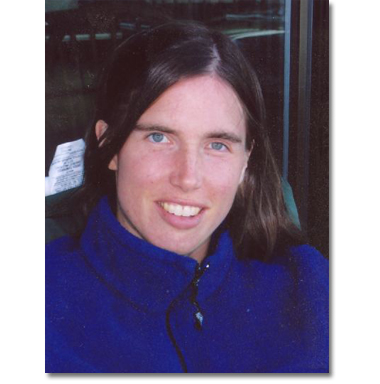 |
Megan Kennedy
When I was seven years old, I began having seizures and was diagnosed with a large arteriovenous malformation (AVM), an abnormal connection between the arteries in the brain. Mine were usually complex partial seizures, impairing my awareness, although I also had one to three grand mals a year, which knocked me out.
I had brain surgery in 1990 to remove the AVM. During the surgery I hemorrhaged and lost 17 units of blood. My neurosurgeon induced a coma. When I came out of the coma, I was paralyzed on the right side, had difficulty speaking, and my vision was impaired. I was in rehabilitation for four months, though my actual recovery took more than a decade.
Tests showed that the malformation in my brain was gone. But I still had seizures, an average of three to five a week, depending on stress level, fatigue and other factors.
I tried virtually every anticonvulsant (12 at last count), including Dilantin, Tegretol, Lamictal, Vigabatrin, Topamax, Klonopin, Zonegran and Lyrica. In conjunction with the medications, I tried the Ketogenic diet, neurofeedback, Chinese herbs, acupuncture, transcendental meditation and other approaches. Nothing worked.
I felt anxious and afraid. Socially I felt isolated.
Then, in 2003—when I was 26 years old—my mother found the Andrews-Reiter program on the Internet. She took me to Santa Rosa, California, to meet with Dr. Donna Andrews and Dr. Joel Reiter. The two doctors had reviewed my voluminous medical history and told us: they couldn't guarantee that they could "cure" my seizures. But they expressed hope that my seizures could become less frequent and less severe.
I took a five-day course from Dr. Reiter and Dr. Andrews. When I returned home, Dr. Andrews worked with me on a weekly basis, over the telephone, for about three years.
When I first met her, Dr. Andrews asked me an intriguing question: “What if you decide that you will never have another seizure? Can you imagine that?” Not have another seizure? No neurologist had ever hinted that that might be possible. I had also never thought that I had any control over my seizures. Still, as skeptical as I was at first, the discovery of someone in the medical field who thought it was possible—someone who had herself overcome horrendous seizures—that was the beginning of my path to healing.
A series of neuropsychological tests done by Dr. Andrews showed that I had a superior IQ but an extremely high level of fear and anxiety and low self-esteem. She instructed me in relaxation, deep diaphragmatic breathing and visualizations. She gave me a workbook she had created in which I would record seizure triggers, as well as my state of mind when a seizure occurred. Perhaps most important, she worked with me on some deep-seated psychological issues regarding my parents' divorce and the profound trauma I experienced from my father’s disapproval of me, and from his anger at my mother.
It seemed like my sympathetic nervous system had been turned permanently “on,” locking me into a state of tension which precipitated my seizures. As Dr. Andrews checked in with me each week, we spoke about the seizures I had that week. She helped me identify the events that triggered them. And we spoke about my father and how I should communicate with him. She taught me to stand up for myself and, in doing so, became a great ally and source of support. Dr. Andrews made me recognize how I feared my father and eventually how I could deflate his power over me.
I worked for years to increase my awareness of my body, following Dr. Andrews’ advice and example. She provided a relaxation tape, and I used it every day after work. Dr. Andrews went out of her way to make herself available to me, even on weekends.
Dr. Andrews and Dr. Reiter empowered me to realize the healing capacities of my own body. They gave me the tools to start on the journey that today allows me to abort seizures. I have became a dedicated meditator and student of Qigong, the Chinese philosophy of breathing and awareness. Today when I feel an electrical misfiring from the damaged left side of my brain, I can transfer that excessive energy to my brain's right hemisphere, down my right shoulder and arm, release it through the right fingertips and abort the seizure.
In 2009 I met up with Dr. Andrews again. In addition to recognizing the improvements in my health, she noted the extraordinary change in my personality: from fearful to joyous.
Dr. Steven Schachter, professor of neurology at Harvard Medical School, had it exactly right in Complementary and Alternative Therapies for Epilepsy, a piece he produced with esteemed NYU neurologists Orrin Devinsky and Steven Pacia, when he described the Andrews-Reiter treatment as a "systematic approach to identifying preseizure warnings and changing the reflexive fearful and stress responses as one recognizes that a seizure is imminent into a calm response through diaphragmatic breathing. They reasonably postulate that replacing fear with calm can help inhibit seizures from progressing beyond the aura," or initial stage of a seizure.
Schachter calls the Andrews-Reiter approach "an important step in the treatment of epilepsy." And he summarizes the Andrews-Reiter approach beautifully: "Identify settings that cause seizures and avoid them. Reduce life stress. Respond to an imminent seizure with calm, not fear."
As Schachter says, "Common sense? Yes. But they are the first to systematically apply common sense."
I will forever be grateful to Dr. Andrews and Dr. Reiter for teaching me that common sense. I believe that their approach, if widely adopted, could help many more people with uncontrolled epilepsy. |
| |

|
 |
Trevor Park
I have been dealing with my epilepsy ever since I was 13. I started getting grand mal seizures lasting anywhere from 30 seconds to a few minutes. I would black out, and the seizures would leave me confused, sore and usually lying on the ground.
Having seizures changed my outlook on life. I realized: stepping into the pool, bath or spa was now a potentially deadly activity. I wouldn't be able to skydive, ocean dive or rock climb. And say goodbye to driving, that great leap from adolescence to adulthood. The only thing worse than being the only kid in high school who canít drive is having gotten your license and then having it taken away.
You have to be seizure-free for one year to drive. I made it a year—but not much longer. When my parents were away, I took their car and was driving to a friend's house when I had a grand mal seizure, lost consciousness and smashed into a lamp post at 80 kilometers an hour. Like that, my driving days were over.
I wanted to know: how can I fix this problem? How can I lead a normal life? The neurologists I saw said the answer was taking anti-seizure medication. They told me, "Take these pills. And if they donít work, we'll try another pill. And another. And another."
None of the pills worked for me. All they did was make me depressed and exhausted. With the medication, I slept 16 hours a day. I was getting worse, way worse, and my parents were doing everything in their power to help, starting with seeing every possible neurologist in Canada and moving on to Harvard doctors and hospitals in New York.
The doctors at Harvard recommended brain surgery. At the time I was open to doing anything to fix the situation. I simply couldnít function in society—couldnít study, couldnít keep a regular job, couldnít play sports or even hang out with my friends. My life had to change.
Then my parents heard of someone who took a different approach to treating epilepsy: Dr. Donna Andrews, a psychologist in California.
Dr. Andrews' personal story touched me. As a kid, she had suffered from seizures and was told at the age of 18 that she would never resolve the massive misfirings in her brain, that she would have those seizures forever. Andrews couldn't help but wonder: if her brain were so messed up, as her doctors claimed, then why wasnít she having seizures all the time? What was the difference between the times she was healthy and the times she was having a seizure? She figured there must be a trigger, something that sparks the seizures to erupt.
Today she has been seizure-free for over 40 years—and with no medication.
The question, then, was who would you listen to: someone who had never had seizures and offers you drugs in the hope that you'll stop convulsing or someone who has been through this illness, who knows exactly what you are going through and has actually overcome her problem?
I flew out to Santa Rosa, California, to meet with Dr. Andrews. That meeting changed my life.
Donna shifted my perspective on everything. She encouraged me to do my homework, to study epilepsy and its treatments. She said never put something into your body if you donít know what it is. And she said first and foremost that epilepsy was my problem, and getting healthy was my responsibility. I had to figure out my body. And I had to find my triggers.
Dr. Andrews had me asking myself new questions:
what was I doing when I had these seizures? What was the reason they came at these specific times and in these specific locations?
With her help, I started learning relaxed breathing and moved on to meditation. I learned that the source of my seizures came from the left temporal lobe of my brain. Whenever I would feel odd—the sign of an oncoming seizure—I would breathe slowly and deeply and use my finger make little circles on the palm of my left hand. This would awaken the right side of my brain and, to my amazement, would prevent the seizure from taking over the whole brain.
With practice, I became better at recognizing the feelings that precede my seizures, like a sense of lightheadedness, where suddenly everything seems off. Other times the words that come out of my mouth are just gibberish. In the past, that gibberish was always followed by losing consciousness.
Not anymore. Now, when I hear that gibberish, I breathe and start making those little circles on the palm of my left hand. By doing that, in this last year I have prevented over 20 seizures.
My health hasnít been perfect. Since meeting Dr. Andrews 15 months ago, I have had three seizures. But each of those seizures was clearly my fault: I didn't take my meditation or took a lower dose than I was supposed to. Other times I partied hard and drank heavily, which didn't help.
That said, today I couldnít be happier. I have a much greater understanding of my epilepsy, which makes it far less scary. And I can feel my life moving in the right direction. Every time I prevented a seizure I felt my self-confidence rise. I still haven't gone skydiving or ocean diving in Asia and Australia, two of my "bucket list" goals. But with my seizures coming under control and my health continuing to improve, I know that soon there will nothing that I can't do. |
| |

|
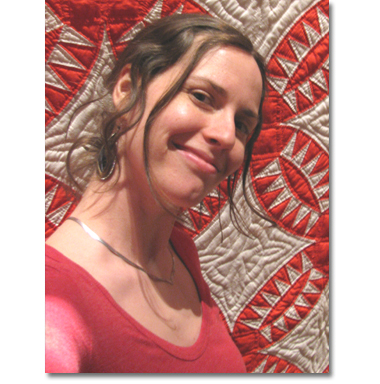 |
Athena
I started having partial complex seizures at 16, the result of a tumor in my left occipital lobe. To remove it, I had my first surgery in 1996, when I was 17 years old. The surgery was a failure, so they tried again two years later. After another two years passed, I traveled from Atlanta to the University of California, San Francisco, where Dr. Mitch Berger performed a 13-hour surgery. Success at last.
Between the time of my first and third surgeries, the tumor grew deeper into my brain, into my hippocampus, which changed my seizures. My seizures usually occur in clusters, three to seven seizures during my sleep. These nighttime attacks would drain my mental and physical energy during the next few days. Exhausted, I'd have additional seizures while awake.
Finally, in June 2009, at age of 30, I flew to California, met Dr. Donna Andrews and received an evaluation. Every week since then I have talked with her on the phone for at least a half an hour, updating her on any seizures that occurred. She offers insights on how I possibly could have avoided those seizures.
Under her guidance and that of Dr. Reiter, I have slowly decreased my medication. Under the care of my previous neurologist, I had been taking huge amounts of medication. Now I have tapered off 75 percent of that dose. This has given me back the mental and physical energy I had had before the seizures began.
I take this renewed mental strength and use it to apply the lessons Donna has taught me. I have learned how to recognize my seizure triggers. As a result, I no longer have daytime seizures. During the night I do still have some seizures, but they are not as severe as they used to be and no longer inhibit me the next day. So far this year, there has been two entire months when I have been completely seizure-free.
I keep making progress, reaching milestones in my health. Most recently, during the night I had an aura and was able to halt the electrical surge right there, thwarting the onset of a full seizure.
With Dr. Andrews' guidance, my understanding of my seizures continues to grow, and I believe I will soon be able to prevent my seizures completely. I'm certainly headed in that direction. I've regained my energy, my life spirit, and I am eternally grateful to Dr. Andrews for showing me these new techniques which have made such a difference in my life.
|
| |
|
| |
|
|
   |
|